Knowing how to use a tick removal tool is a key component of your families summer time safety.
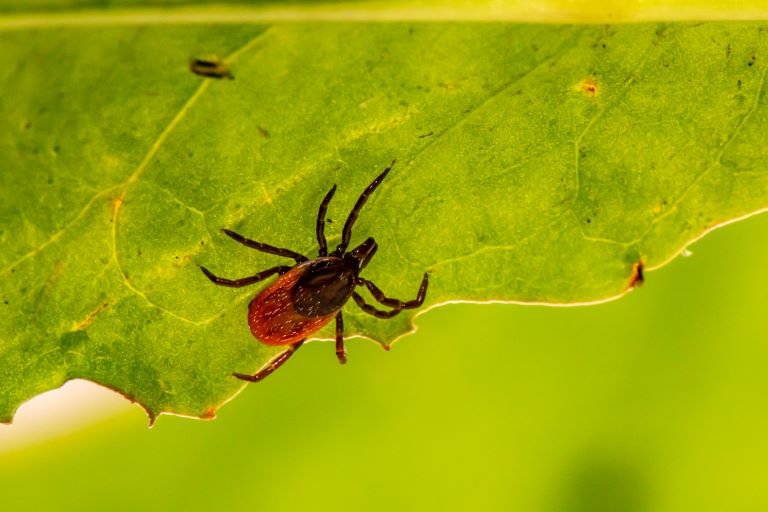
Ticks Have Expanded Their Reach Year Over Year
Over the past few years, ticks have expanded their geographical zones immensely. As the climate warms, they have found suitable living conditions further north and each year they’re being documented in places they’ve never been seen before.
Ticks hitch a ride on animals like deer, making their way into the forests and fields that the deer use for grazing. Then they hop off into the grass and wait for a bare legged human to feast on. A tick bite is no joke, as they can carry all kinds of unwanted illnesses like Lyme Disease and Rocky Mountain Spotted Fever.
Lyme Disease has become a topic of much debate lately as often it is hard to diagnose and it affects individuals in different ways. Some people may only experience mild symptoms, while for others it can be crippling.
Tick Avoidance Doesn’t Seem Possible Anymore
The most effective way to avoid these terrible illnesses is to avoid tick bites all together, but that is becoming much harder to do. Ticks are being found in the long grass of rural fields as well as the manicured lawns of local parks in major cities. It’s becoming quite obvious that completely avoiding these little pests is going to be nearly impossible.
One way that will help in avoiding tick bites is with the use of bug repellents containing DEET. However, DEET use brings concerns of its own as it can be harmful. It is especially not a good product to use on children and it should be avoided as much as possible for adults as well.
So, since it seems pretty likely that we will all end up with a tick on our skin at some point, we need to be prepared to deal with it the proper way. First off, removing a tick as quickly as possible after noticing it is extremely important to reduce the risk of bacteria transfer.
However, giving it a smack and pulling on it isn’t the right solution as this would only increase the likelihood of smearing bacteria into open bites or cuts on the skin. Ticks need to be removed carefully!!
There are plenty of small designer tools that can be used to remove a tick safely. Most importantly, they all have the same basic goal in mind. They all attempt to remove the tick without squishing it or causing any undue anxiety which would cause the tick to bite or emit its saliva onto your skin. The key for how to use a tick removal tool is to do so gently and slowly so that the tick willfully leaves your body.
What Tick Removal Tools are Available?
There are five basic varieties of tick removal tools and how each one is used varies slightly. The main five are:
- The Tick Key
- The Tick Scoop
- The Tick Twister or Tick Hook
- The Tick Pry
- Tweezers
How to Use the Tick Key Tick Removal Tool
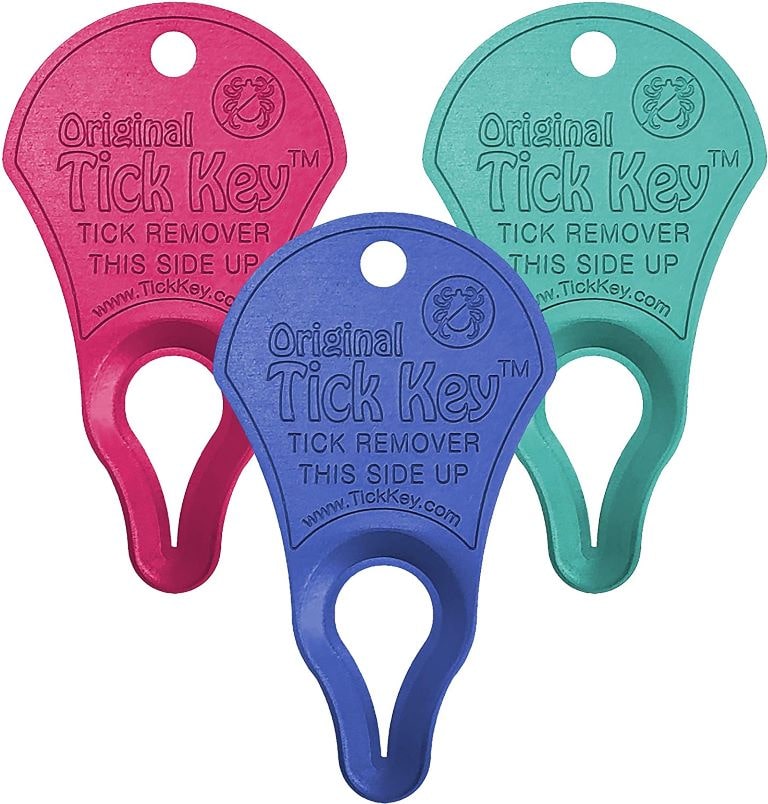
The Tick Key uses natural forward leverage to remove the little buggers without irritating them so that they leave willingly. Whether they are lobbed up on top of the skin or already engorged, this mechanism will force them out so that they can be removed and exterminated.
To use this tick removal tool, all you need to do is put the opening over the tick and slide the Tick Key along the skin so that the tick enters the slot of the tool. Continue pulling the key flush along the skin which will force the tick to detach as it rests on top of the key.
This easy to use tick removal tool easily attaches to a keychain or lanyard so you can take it with you everywhere you go whether it be the local dog park or a long hiking trail.
How to Use the Tick Scoop Tick Removal Tool
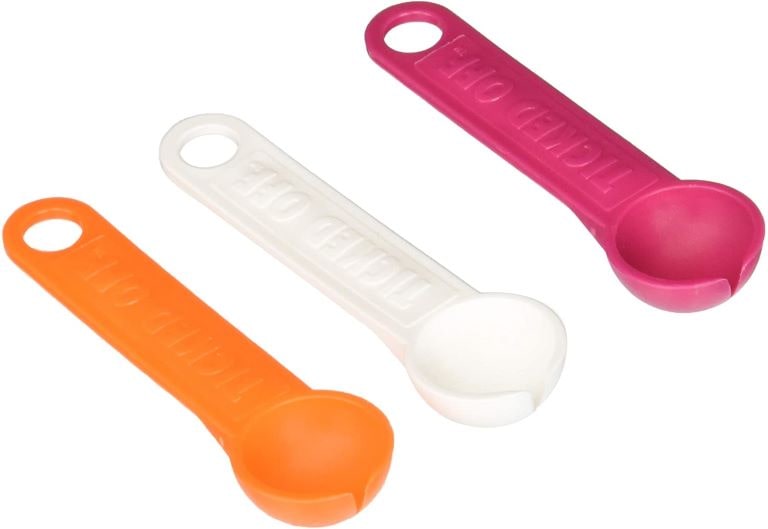
The Tick Scoop resembles a plastic measuring spoon with a small “v” notched out of the end of the spoon.
To use this tick removal tool you simply slide the notch over the tick until it becomes trapped in the V shape cut out. As you press gently on the skin while sliding the scoop the tick it will fall into the scoop so that you can keep it for examination without having to touch it directly.
The Tick Scoop is small and easy to pack. It also fits easily on a keychain although it might look a little strange having a tiny spoon attached to your keys. Nevertheless, it is an effective tool for safely removing ticks from yourself, your pets or your children.
How to Use the Tick Twister or Tick Hook
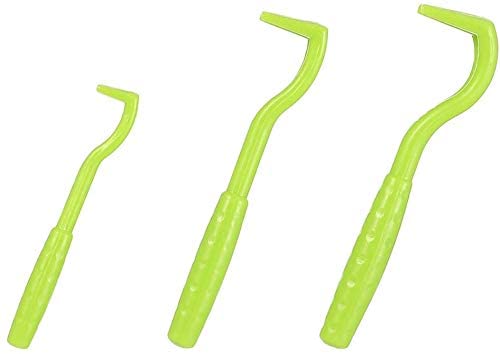
The Tick Twister or Tick Hook, as it is also called, looks like a little fork or garden tool used to dig and pry out engorged ticks from the skin.
To use the Tick Twister you again want to slide the large V opening over the tick until it is lodged in the notch. Using this tick removal tool differs a little bit from the others in that once the tick is lodged, you will gently pry up on the tick while twisting the tool in circles until it has been removed.
The Tick Twister has been designed so that the twisting motion forces the tick to let go so that the whole tick, head and body can be removed. The one concern with twisting and agitating the tick is that in the process it could actually become distressed which may cause it to vomit its saliva on the skin or any open bites.
How to Use a Tick Removal Tool Set
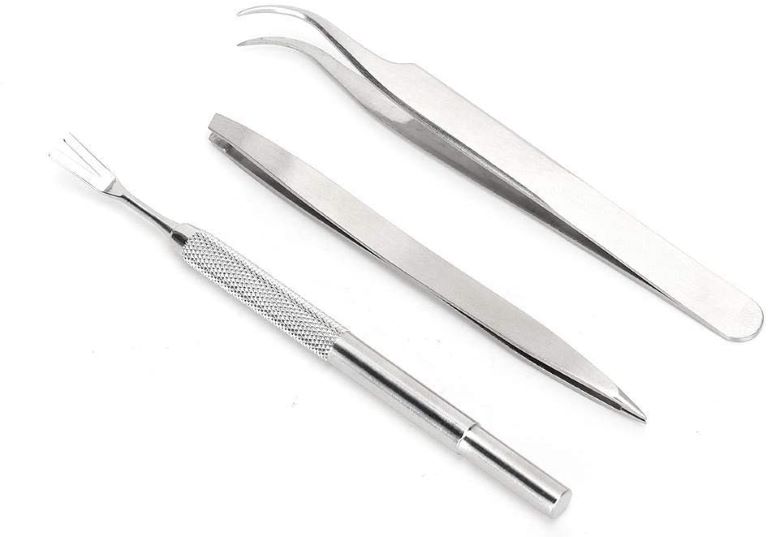
Some tick removal tool sets come equipped with a few different tools so that you can choose the right tool for the right size of tick as well as the situation that you find yourself in.
For example, one tool may be better for removing a tick that has just attached to your body, but hasn’t bitten in yet. Another tool might be more suited for that situation where you find a tick that is obviously feasting on your arm.
Most often these tool kits will have included a pair of fine tipped metal tweezers and a small metal pry tool that looks something like a mini crow bar or nail remover.
To use the pry bar to remove a tick, slide the opening over the tick while pressing gently on the skin. As you slide underneath the tick, it will have no choice but to let go of the skin so that you can safely remove it.
To use the tweezers included in your tick removal tool kit, grab ahold of the tick as close to your skin as possible. Grabbing the head of the tick is ideal, but if not possible, then grab it as close to the head as possible. Using a slow, steady motion, pull upwards on the tick until it has detached itself from your body.
Keep in mind that pulling too quickly risks tearing the tick and potentially leaving parts of its mouth or head inside of you.
How to Use Household Tweezers to Remove a Tick
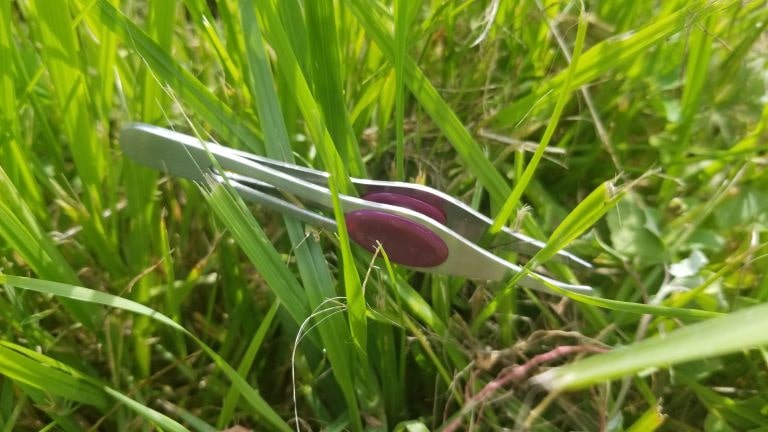
As we have already discussed, the key to tick removal is reducing the likelihood of it vomiting on its way out and ensuring that the full amount of the head and mouth parts are removed without tearing.
The concern with using household tweezers is that they are blunt and large which increases the chances of tearing or squishing the tick and emitting teh saliva onto the skin. While using household tweezers isn’t the number one choice, they certainly can be used with caution.
Again, in order to accomplish this, grab ahold of the tick from or near the head and pull slowly upwards until it has detached and can be removed safely. Because of the risk of tearing, pulling slowly is very important.
How Long Does it Take for a Tick to Burrow?
Ticks will spend anywhere between half an hour and 2 hours searching the body for an ideal location to feed from. At that time, they will take a bite and insert their feeding parts under the skin to draw blood and feed until they have had their fill. Once full, they will drop off, however they can remain feeding for several days on a host.
How Long Does it Take for a Tick to Get Engorged?
It can take two to three days for nymphs to have their fill while it can take four to seven days for adults to become fully engorged. This is why it is extremely important to check for ticks daily if spending time out in any type of vegetation including parks, fields and forests. The longer a tick is allowed to stay on your body, the greater chance it will have of transmitting any diseases it is carrying.
We love writing about the things that make a real difference in your outdoor experience. Some of the links in this post are affiliate links in which case we may earn a small commission at no extra cost to you if you make a purchase. We truly appreciate you taking the time to read our content and hope it has added value to your next camping and outdoor adventure.




